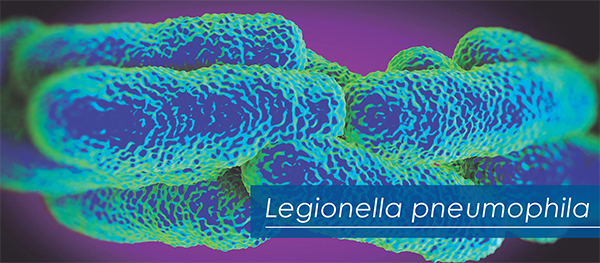Legionella pneumophila was first recognized as a disease entity from a pneumonia outbreak at a 1976 Convention of the American Legion in Philadelphia. This species accounts for up to 90% of legionellosis cases, which includes both legionnaires’ disease (LD) and Pontiac fever. Legionnaires’ disease presents as a pneumonia with severe multisystem involvement. Additional non-specific symptoms include fever, non-productive cough, myalgias, dyspnea and diarrhea, and neurological findings such as headache and lethargy. Pontiac fever is also characterized by malaise, myalgia, and fever; but it is a milder non-pneumonic infection.

Legionellae are aerobic gram-negative bacteria associated with respiratory infections. To date, more than 50 Legionella species with 70 serogroups are known, many of which cause disease in humans. Legionella pneumophila is the most common pathogenic species and comprises at least 16 different serogroups. Among them, serogroup 1 (sg1) alone has been recognized as the most important agent.
Legionellae are ubiquitous in environmental water sources and may cause sporadic as well as epidemic cases, which can be nosocomial, community-acquired and travel-associated. Aerosol-generating systems such as faucets, showerheads, whirlpools, cooling towers, and nebulizers aid in the transmission of Legionella from water to air. Afterwards, human inhalation or aspiration of contaminated water droplets into the lower respiratory tract leads to Legionella infections and disease outbreaks.
Available test for the Legionella pneumophilla detection:
- Rapid Test:
- bioSCIENCE:
